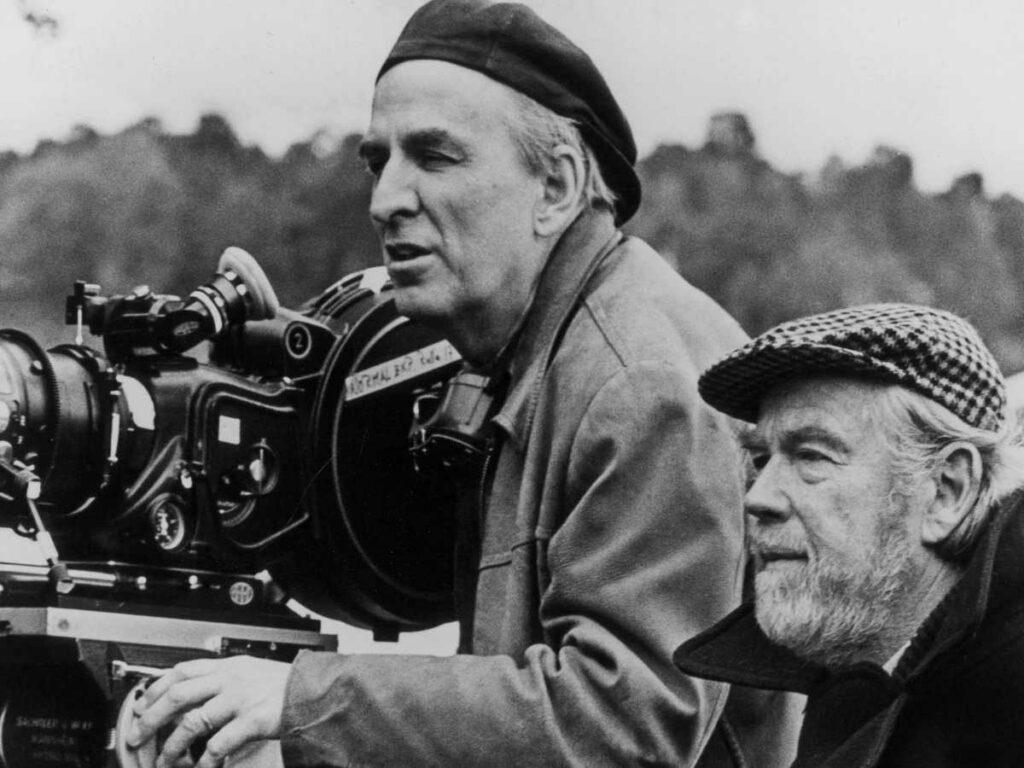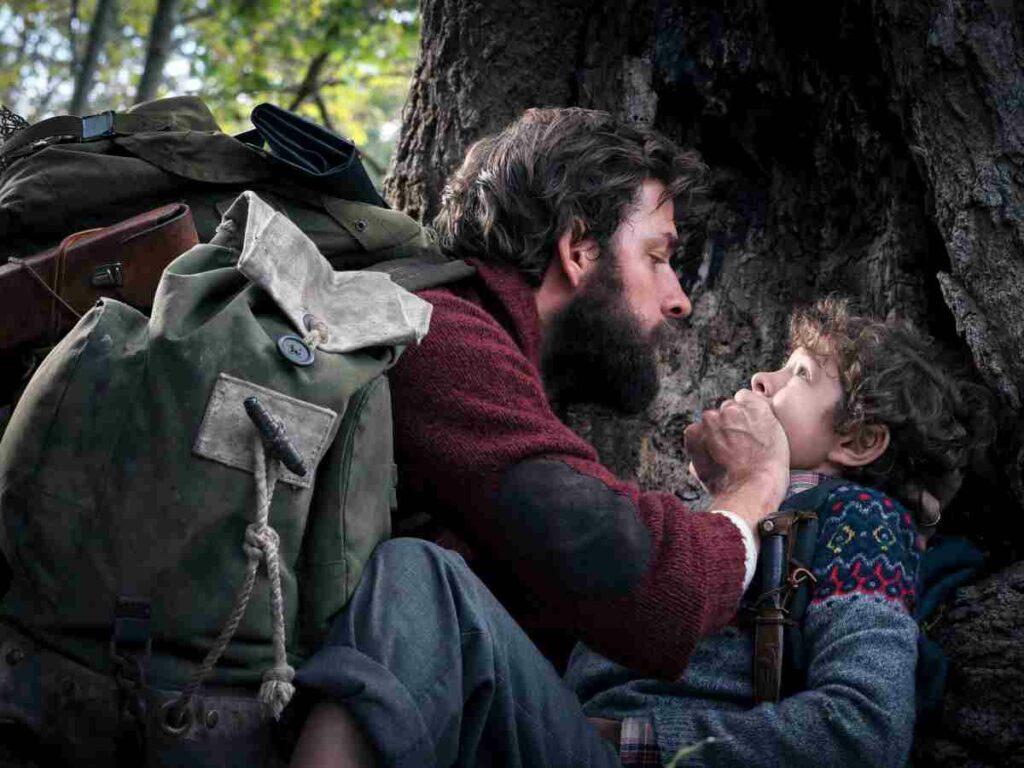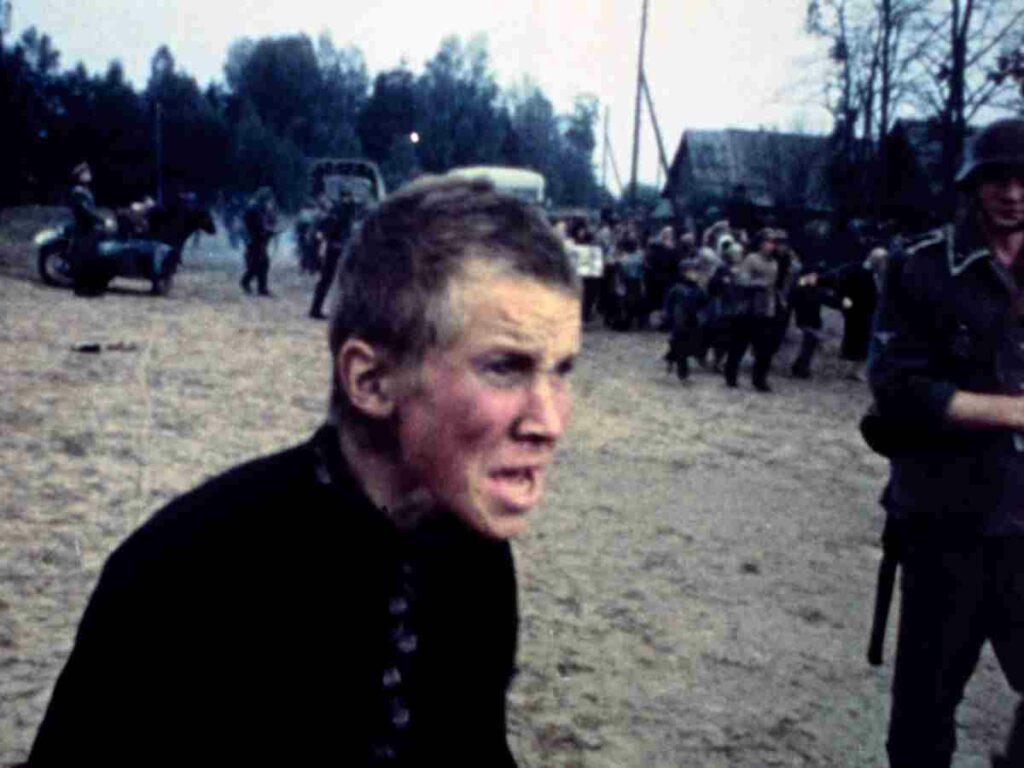Swedish auteur Ingmar Bergman stands as one of cinema’s most prolific and influential artists. Born on July 14, 1918, in Uppsala, Sweden, Ernst Ingmar Bergman was raised by a Lutheran minister father and a nurse mother, a background that shaped much of his artistic vision. Though Bergman described his upbringing as strict, he also spoke of his mother and grandmother with deep affection. Ingmar Bergman’s childhood left a profound impact on him, shaping the rich themes and emotions that would later define his masterworks. Over nearly six decades and more than 60 films, Bergman delved into existential questions, constantly rehashing his own preoccupations about the meaning of life, the silence of God, loneliness, and the search for identity.
As a child, Ingmar Bergman received two gifts that would foreshadow his future career: a miniature puppet theater and a magic lantern. In 1941, he wrote his first play, Kasper’s Death, which was produced that same year. After a brief period of rewriting scripts, Bergman adapted his own novel, which depicted his final year as a student, into a screenplay. The resulting film, Torment (1944), was directed by Alf Sjöberg. Two years later, in 1946, Bergman made his directorial debut with Crisis. Though the shoot was challenging, Bergman thrived under the guidance of Swedish silent-era master Victor Sjöström
Bergman’s breakthrough didn’t come until 1953. Romance drama Summer with Monika would cement his reputation internationally. However, it was the global success of The Seventh Seal (1957) that solidified Bergman as an auteur with a distinctive, inimitable style. From that point until his final feature in 2003, Bergman enjoyed a storied career, producing masterpieces that continue to be regarded as some of the most influential works in cinema history. The ten films below offer a starting point for exploring Bergman’s body of work, as well as a celebration of his most extraordinary achievements.
10. Cries and Whispers (1972)

Ingmar Bergman’s fascination with the human face and the theme of death is well-documented, but it reaches its most haunting expression in Cries and Whispers. Set in an early 20th-century manor, the film follows three sisters—Maria, Karin, and Agnes— as Agnes suffers through a terminal illness. Alongside the sisters, their maid Anna aids in tending to her physical and emotional agony. From a visual and textual standpoint, Cries and Whispers delves deep into the tension between surface appearances and the turmoil beneath.
Bergman’s staging is filled with vivid, theatrical tableaux that meticulously convey the characters’ pain and despair. Sven Nykvist’s mesmerizing cinematography, dominated by lush reds and unforgettable close-ups, earned him his first Academy Award. One of the most visually striking moments in Bergman’s cinema is the Pietà-like tableau of Anna cradling the dying Agnes—an indelible image of suffering and tenderness.
9. Through a Glass Darkly (1961)

In the 1960s, Ingmar Bergman entered a new chapter in his already illustrious career by teaming up with cinematographer Sven Nykvist, a collaboration that would last for three decades. Their creative partnership was instrumental in shaping a series of chamber dramas, unofficially referred to as the Faith Trilogy. Drawing on his strict religious upbringing and ongoing spiritual struggles, Bergman used these films to explore deeper intellectual and emotional complexities.
Through a Glass Darkly, the first in the trilogy, takes place over 24 hours on a remote, desolate island. The story centers on a family reunion of sorts, as Karin (Harriet Andersson), recently released from a mental institution, returns home. As the narrative unfolds, simmering family tensions and harsh realities slowly rise to the surface. The absence of music in many scenes amplifies the atmosphere of emptiness and despair.
8. Scenes from a Marriage (1974)

Scenes from a Marriage began as a five-hour, six-part television miniseries, which Bergman later condensed into a 2-hour, 49-minute theatrical version. It stands as one of the filmmaker’s most raw and unflinching works, drawing viewers in with its intense emotional honesty and gradually unraveling the characters through brutally candid conversations. The story follows Marianne (Liv Ullmann) and Johan (Erland Josephson), a long-married couple whose relationship crumbles when Johan reveals he is having an affair with a younger woman.
Inspired by Bergman’s own failed marriages, the film offers a microscopic examination of a seemingly sophisticated relationship, often leaving the audience uncomfortable, yet unable to look away. Ullmann and Josephson deliver deeply authentic performances, capturing the searing anger, pain, and disillusionment that comes with a marriage in crisis. The film’s exploration of marital breakdown has influenced many works, including Annie Hall and Marriage Story.
7. Winter Light (1963)

Winter Light, the second film in Bergman’s Faith Trilogy, offers another profound reflection on the cruelty and silence of God in moments of deepest human need. Set in a small rural community, the story centers on Tomas (Gunnar Björnstrand), a pastor grappling with a spiritual crisis, yet still delivering sermons to his shrinking congregation. His doubts about God’s existence deepen after meeting Jonas Persson (Max von Sydow), a suicidal fisherman whose despair mirrors Tomas’ own inner turmoil.
Much like Through a Glass Darkly, Bergman employs extreme close-ups, introspective monologues, and prolonged silences to express the isolation and deep introspection of his characters. The stark, barren landscape and wintry setting further emphasize the pervasive dread and doubt that surround them. Bergman, drawing from his own experience as the son of a Lutheran pastor, infuses the film with personal insights into faith and existential uncertainty.
6. Autumn Sonata (1978)

Autumn Sonata marks the only collaboration between two icons of Swedish cinema: Ingmar Bergman and Ingrid Bergman. While both were legends, Ingrid had also achieved monumental fame as a Hollywood star. This emotionally profound drama, centered on a strained mother-daughter relationship, was also Ingrid Bergman’s final feature film. She plays Charlotte, a celebrated concert pianist, who is invited to visit her daughter Eva (Liv Ullmann), a writer living in a serene country home. Having abandoned Eva to focus on her career, Charlotte’s return brings long-buried tensions to the surface.
Like many of Bergman’s intense chamber dramas from the 1960s, Autumn Sonata is emotionally charged, with raw, heartfelt conversations that explore the women’s shared history, trauma, and regret. Both characters elicit deep sympathy, as their complex relationship unfolds. The film is more performance-driven, with Bergman largely forgoing metaphors to focus on the powerful dynamics between the two. It also touches on the filmmaker’s own concerns about his struggles as a parent, adding another layer of personal depth.
5. The Seventh Seal (1957)

Following the success of his comedic venture Smiles of a Summer Night, Bergman took a bold leap into allegory and historical fantasy with The Seventh Seal. The risk paid off handsomely, earning Bergman international acclaim and a Special Jury Prize at Cannes. Set in the 14th century during the Black Death, the film follows Antonius Block, a knight who has returned home after fighting in the Crusades. As he journeys through a landscape gripped by fear and religious hysteria, Block grapples with his wavering faith.
In a central motif, Block engages in a symbolic chess game with Death, personified in human form, while crossing paths with a troupe of traveling entertainers. The Seventh Seal is renowned for its striking and unforgettable imagery, from Block’s initial encounter with the grim reaper on the seashore to the harrowing procession of flagellants, and the iconic ‘Dance of Death.’ The haunting visuals cemented the film’s place as one of cinema’s most enduring works.
WATCH: Most Beautiful Shots in Film History
4. The Silence (1963)

The final installment in Bergman’s loosely connected Faith Trilogy, The Silence, shocked audiences of its time with its sexually provocative imagery, challenging the social norms of the era. Often seen as a thematic precursor to his later masterpiece, Persona, The Silence focuses on the strained relationship between two sisters. The elder, Ester (Ingrid Thulin), is an ailing intellectual and translator, while the younger, Anna (Gunnel Lindblom), is a sensual, carefree woman defined by her physicality. As they journey home, they stop in an unnamed European country with Anna’s ten-year-old son, Johan.
The film delves into the emotional isolation of the two sisters as war looms ominously in the background. Sven Nykvist’s masterful black-and-white cinematography heightens the tension, using stark contrasts of light and shadow, mirror reflections, and startling close-ups. The close-ups in The Silence and Persona are particularly striking, offering a window into the inner worlds of the characters, making their emotional states almost palpable.
3. Wild Strawberries (1957)

Critics often regard 1957 as the year Ingmar Bergman truly came of age as an extraordinary artist. After his medieval existential drama The Seventh Seal, he shifted to a contemporary tale with Wild Strawberries, one of his first semi-autobiographical films. The story follows 78-year-old Professor Isak Borg on a day-long journey to receive an honorary degree, during which he reflects on his past. The narrative, inspired by Bergman’s own drive through his grandmother’s home in Uppsala, blends personal reminiscences with expressionist dream sequences, offering a rich exploration of the protagonist’s turbulent emotions.
Wild Strawberries also marks the final screen performance of legendary Swedish silent filmmaker Victor Sjöström, who plays the role of Isak Borg. Though Isak is haunted by regret and longing, the film leaves us with a heartwarming message about cherishing beautiful memories before life’s inevitable end.
2. Fanny and Alexander (1982)

Ingmar Bergman’s sprawling three-hour drama Fanny and Alexander, also available as a five-hour TV miniseries, is less scathing than Winter Light or Persona, but no less captivating. Set in the early 20th century, the film follows the wealthy Ekdahl family, who run a theater in a small Swedish town. The titular characters, siblings Fanny and Alexander—surrogates for Bergman and his sister—are thrust into turmoil when their father dies, and their mother, Emilie, remarries a strict local bishop, forcing them to move into his oppressive household.
Opening with a joyous Christmas party and closing with a baptism ceremony, Fanny and Alexander explores Bergman’s signature themes: marital strife, faith, magical realism, existential angst, and loneliness. Sven Nykvist’s visual palette transforms the Ekdahl mansion into a warm, almost magical refuge, even as it houses deeply flawed and spiteful individuals. The film, which won four Academy Awards, was Bergman’s final feature, though he continued to work in theater and television afterward.
1. Persona (1966)

Ingmar Bergman’s Persona is a challenging psychological drama that showcases the Swedish auteur at the height of his technical and artistic prowess. Blending avant-garde techniques with a gripping exploration of identity, the film offers some of the most unforgettable imagery in cinematic history — not just within Bergman’s body of work, but in the medium as a whole. The narrative centers on Elisabeth Vogler (Liv Ullmann), a renowned stage actress who inexplicably falls mute during a performance of Elektra.
Despite no physical explanation for her condition, Elisabeth is sent to a remote seaside cottage to recover, accompanied by her nurse, Alma (Bibi Andersson). What begins as a quiet retreat turns into an increasingly disorienting psychological battle, as the boundaries between the two women’s identities start to blur. With Sven Nykvist’s stunning cinematography and the powerful, nuanced performances of the lead actresses, Persona is both frustratingly enigmatic and radically thought-provoking. It remains one of Bergman’s most vital and mysterious films, pushing the boundaries of cinema itself.
Wrapping Up
Given the breadth and quality of Ingmar Bergman’s filmography, it’s difficult to capture all his best works in a single list. Many of his lesser-known films are equally deserving of attention. Titles like Summer with Monika, A Lesson in Love, Smiles of a Summer Night, The Virgin Spring, Shame, The Passion of Anna, Face to Face, and Saraband each have their own unique place in his legacy.
If you find Bergman’s films to be heavy or difficult to watch, it’s because he compels us to confront deeper aspects of our humanity — those parts of ourselves and life that we often choose to avoid.
Over to you now! Which Bergman film do you find most affecting or thought-provoking? Let’s talk in the comments.




